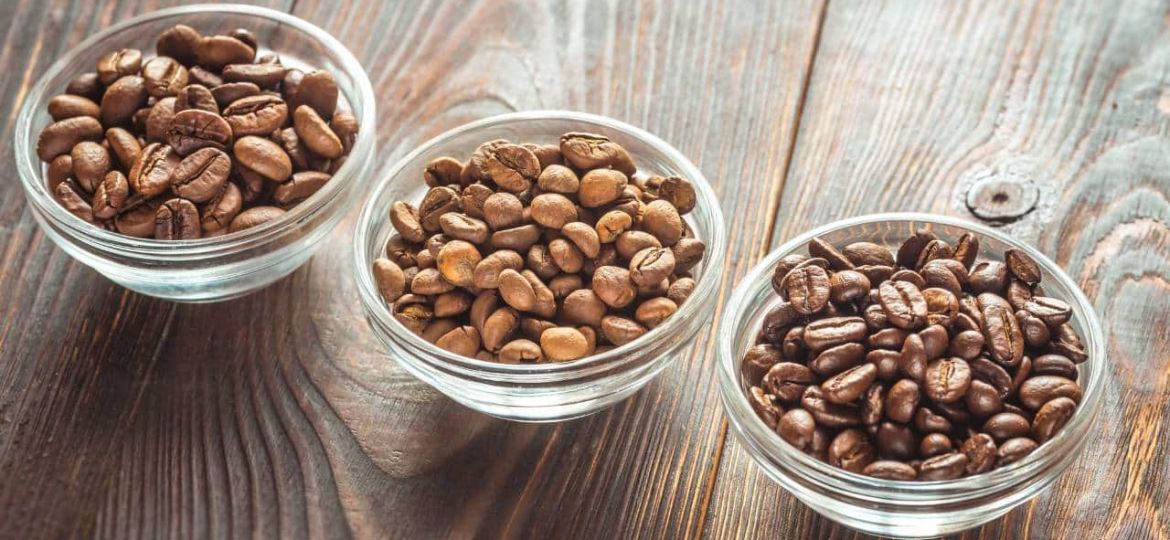
Coffee, a beloved beverage for many, can sometimes be a source of discomfort due to its acidity, especially for those with sensitive stomachs. Understanding the acidity in coffee and how it affects digestion is crucial for enjoying your brew without discomfort. This section explores the relationship between coffee roasts and their acidity levels, offering insights for those who seek a milder cup.
When it comes to reducing acidity in coffee, the roast level plays a pivotal role. Darker roasts are generally less acidic compared to lighter ones. This is because the longer roasting process allows more time for the natural acids found in coffee beans to break down. Thus, choosing a darker roast can be a more stomach-friendly option for coffee lovers sensitive to acidity.
Key Takeaways on Coffee Roast and Acidity
- Dark Roasts and Acidity: Darker roasts tend to be less acidic. This is due to the extended roasting time which effectively reduces the natural acids in the beans.
- Impact of Brewing Methods: Methods like cold brew significantly lower the perceived acidity in coffee. This brewing technique allows for a smoother, less acidic taste because it extracts fewer acids due to the cold water steeping process.
- Influence of Bean Origin and Processing: The origin of the coffee beans and how they are processed greatly influence their acidity levels. Beans from different regions and those processed using different methods can have varying acidity profiles, affecting the overall acidity of the coffee.
Understanding Coffee Acidity
What makes your coffee taste sharp and sometimes upset your stomach? The answer lies in its acidity. Acidity in coffee is influenced by several factors including the type of beans used, the altitude at which they are grown, and how they are processed. For example, Arabica beans, known for their superior flavor, tend to be more acidic than Robusta beans. Additionally, coffee grown at higher altitudes often has higher acidity levels due to the slower bean development, which allows more complex flavors and acids to form.
The acidity of coffee is measured using the pH scale, where lower values are more acidic. Typically, coffee has a pH level between 4.85 and 5.10, making it mildly acidic. During roasting, the natural acids in coffee beans undergo chemical changes. Darker roasts tend to have a higher pH (less acidic) because the longer roasting process breaks down more of the acidic compounds.
Best Practices for Reducing Coffee Acidity
If you love coffee but are sensitive to its natural acidity, there are several strategies you can use to enjoy a smoother cup:
- Choose Darker Roasts: As mentioned, darker roasts are less acidic. Opting for a dark roast can naturally decrease the acidity in your coffee.
- Adjust Your Brewing Method: Cold brew is an excellent choice for reducing acidity. The cold water extracts fewer acids compared to hot brewing methods. If you prefer hot coffee, using methods like a French press can also help since it allows for more oils and flavors without extracting too much acidity.
- Mind the Grind: The size of your coffee grounds can affect acidity. Coarser grinds expose less surface area to water, reducing acid extraction. So, if you’re brewing at home, go for a coarser grind.
- Use Filtered Water: The quality of water can influence the overall taste and acidity of your coffee. Hard water can make your coffee more acidic, while using filtered or bottled water can result in a smoother taste.
- Experiment with Additives: If you’re still finding your brew too acidic, consider adding a pinch of salt or baking soda to neutralize some of the acidity. Just a small amount can make a noticeable difference without altering the coffee’s natural flavors.
Comparing Roasts: Light vs. Medium vs. Dark
When choosing your coffee, understanding the impact of roast levels on acidity can enhance your drinking experience. Light roasts, often labeled as “blonde” or “cinnamon,” retain the highest acidity. This is because the beans are roasted for a shorter period, preserving the original flavors and acids of the bean, often resulting in a brighter, tangier cup.
Medium roasts strike a balance between flavor and acidity. The beans are roasted longer than light roasts, which starts to break down the acids, reducing the sharpness while developing a more balanced and smoother taste. Medium roasts typically have a more rounded flavor profile that appeals to a wide range of palates.
Dark roasts undergo the longest roasting times, significantly reducing their acidity. The flavors in dark roasts are more about the roasting process than the original qualities of the bean. These roasts feature a fuller body with richer, deeper flavors that often carry hints of chocolate or smokiness, ideal for those sensitive to acidity or who prefer a hearty cup of coffee.
Role of Brewing Methods in Coffee Acidity
Different brewing methods can also affect the acidity level of your coffee. Espresso, for instance, tends to be less acidic than other methods. Despite using a fine grind, the quick, high-pressure brewing process of espresso extracts less acid, making it a good option for those who want a strong, low-acid coffee.
French press brewing, which involves steeping coarsely ground coffee in hot water for several minutes, can produce a coffee with a varied acidity level. The longer contact time with water extracts more flavors and oils but can also increase perceived acidity, depending on the type of bean and roast used.
Cold brew is the champion when it comes to low acidity. This method involves steeping coffee grounds in cold water for 12 to 24 hours. The cold water extracts much fewer acids than hot water methods, resulting in a smooth, mild brew. This is an excellent choice for coffee lovers looking to minimize acidity without sacrificing depth and flavor.
Review of Low-Acid Coffee Brands
For coffee enthusiasts looking to minimize stomach discomfort without giving up their beloved brew, several brands specialize in low-acid coffee options. Lifeboost Coffee is a popular choice, known for its single-origin, organic, low-acid beans, which are both shade-grown and free from chemicals. Their beans are specially processed to reduce acidity, making them ideal for sensitive stomachs.
Another notable brand is Puroast Coffee. This brand offers a wide range of low-acid options, claiming up to 70% less acidity compared to standard coffees. Puroast achieves this through a unique roasting process that lowers the acid levels significantly.
These brands make it easier to enjoy coffee without the usual acidity that can lead to discomfort, allowing more people to indulge in their daily coffee ritual worry-free.
FAQs
Is espresso less acidic than regular coffee? Yes, espresso is generally considered less acidic than regular drip coffee. The shorter brewing time means that fewer acids are extracted during the process, making espresso a better option for those sensitive to acidity.
Can adding milk or salt reduce coffee’s acidity? Adding milk to coffee can help neutralize some of the acidity due to the milk’s protein binding with acids. Meanwhile, a pinch of salt in coffee can help smooth out the bitterness and slightly reduce the perception of acidity, though it doesn’t change the actual pH level much.
Final Thoughts
Choosing the right coffee roast and brewing method can greatly enhance your coffee experience, especially if you’re sensitive to acid. Dark roasts and cold brewing methods are your best bets for reducing acidity. By selecting low-acid coffee brands like Lifeboost and Puroast, you can enjoy your coffee without the worry of acid reflux or stomach discomfort.









